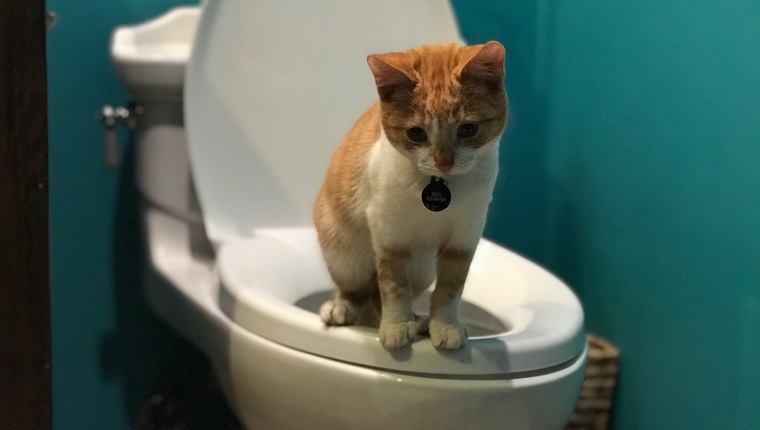Don't Flush Cat Poop Down Your Toilet - Maintain Your House's Pipe System
Don't Flush Cat Poop Down Your Toilet - Maintain Your House's Pipe System
Blog Article
Have you been in search of facts and techniques around Don’t flush cat feces down the toilet?

Introduction
As cat proprietors, it's necessary to be mindful of exactly how we dispose of our feline good friends' waste. While it might seem hassle-free to purge pet cat poop down the commode, this method can have destructive consequences for both the atmosphere and human health.
Alternatives to Flushing
Luckily, there are more secure and a lot more liable methods to deal with cat poop. Think about the adhering to alternatives:
1. Scoop and Dispose in Trash
One of the most usual approach of getting rid of feline poop is to scoop it into an eco-friendly bag and toss it in the trash. Make certain to use a dedicated litter scoop and take care of the waste quickly.
2. Use Biodegradable Litter
Select naturally degradable feline trash made from products such as corn or wheat. These trashes are eco-friendly and can be securely disposed of in the trash.
3. Hide in the Yard
If you have a lawn, take into consideration burying cat waste in a designated area away from vegetable yards and water resources. Make certain to dig deep adequate to prevent contamination of groundwater.
4. Mount a Pet Waste Disposal System
Buy a pet dog waste disposal system specifically designed for cat waste. These systems utilize enzymes to break down the waste, lowering odor and environmental influence.
Wellness Risks
Along with environmental concerns, flushing cat waste can additionally posture wellness threats to people. Pet cat feces might have Toxoplasma gondii, a bloodsucker that can create toxoplasmosis-- a potentially serious ailment, especially for expectant women and individuals with damaged immune systems.
Environmental Impact
Purging feline poop introduces dangerous microorganisms and parasites into the water, posing a significant danger to marine ecological communities. These impurities can negatively affect aquatic life and concession water high quality.
Final thought
Liable animal possession extends past supplying food and sanctuary-- it likewise involves correct waste management. By avoiding flushing pet cat poop down the commode and opting for different disposal techniques, we can decrease our ecological footprint and shield human health.
Why Can’t I Flush Cat Poop?
It Spreads a Parasite
Cats are frequently infected with a parasite called toxoplasma gondii. The parasite causes an infection called toxoplasmosis. It is usually harmless to cats. The parasite only uses cat poop as a host for its eggs. Otherwise, the cat’s immune system usually keeps the infection at low enough levels to maintain its own health. But it does not stop the develop of eggs. These eggs are tiny and surprisingly tough. They may survive for a year before they begin to grow. But that’s the problem.
Our wastewater system is not designed to deal with toxoplasmosis eggs. Instead, most eggs will flush from your toilet into sewers and wastewater management plants. After the sewage is treated for many other harmful things in it, it is typically released into local rivers, lakes, or oceans. Here, the toxoplasmosis eggs can find new hosts, including starfish, crabs, otters, and many other wildlife. For many, this is a significant risk to their health. Toxoplasmosis can also end up infecting water sources that are important for agriculture, which means our deer, pigs, and sheep can get infected too.
Is There Risk to Humans?
There can be a risk to human life from flushing cat poop down the toilet. If you do so, the parasites from your cat’s poop can end up in shellfish, game animals, or livestock. If this meat is then served raw or undercooked, the people who eat it can get sick.
In fact, according to the CDC, 40 million people in the United States are infected with toxoplasma gondii. They get it from exposure to infected seafood, or from some kind of cat poop contamination, like drinking from a stream that is contaminated or touching anything that has come into contact with cat poop. That includes just cleaning a cat litter box.
Most people who get infected with these parasites will not develop any symptoms. However, for pregnant women or for those with compromised immune systems, the parasite can cause severe health problems.
How to Handle Cat Poop
The best way to handle cat poop is actually to clean the box more often. The eggs that the parasite sheds will not become active until one to five days after the cat poops. That means that if you clean daily, you’re much less likely to come into direct contact with infectious eggs.
That said, always dispose of cat poop in the garbage and not down the toilet. Wash your hands before and after you clean the litter box, and bring the bag of poop right outside to your garbage bins.
https://trenchlesssolutionsusa.com/why-cant-i-flush-cat-poop/

I am very involved in How to Dispose of Cat Poop and Litter Without Plastic Bags and I really hope you appreciated the blog post. Liked our blog posting? Please share it. Help someone else find it. Thank you for your time. Come back soon.
Book Today Report this page